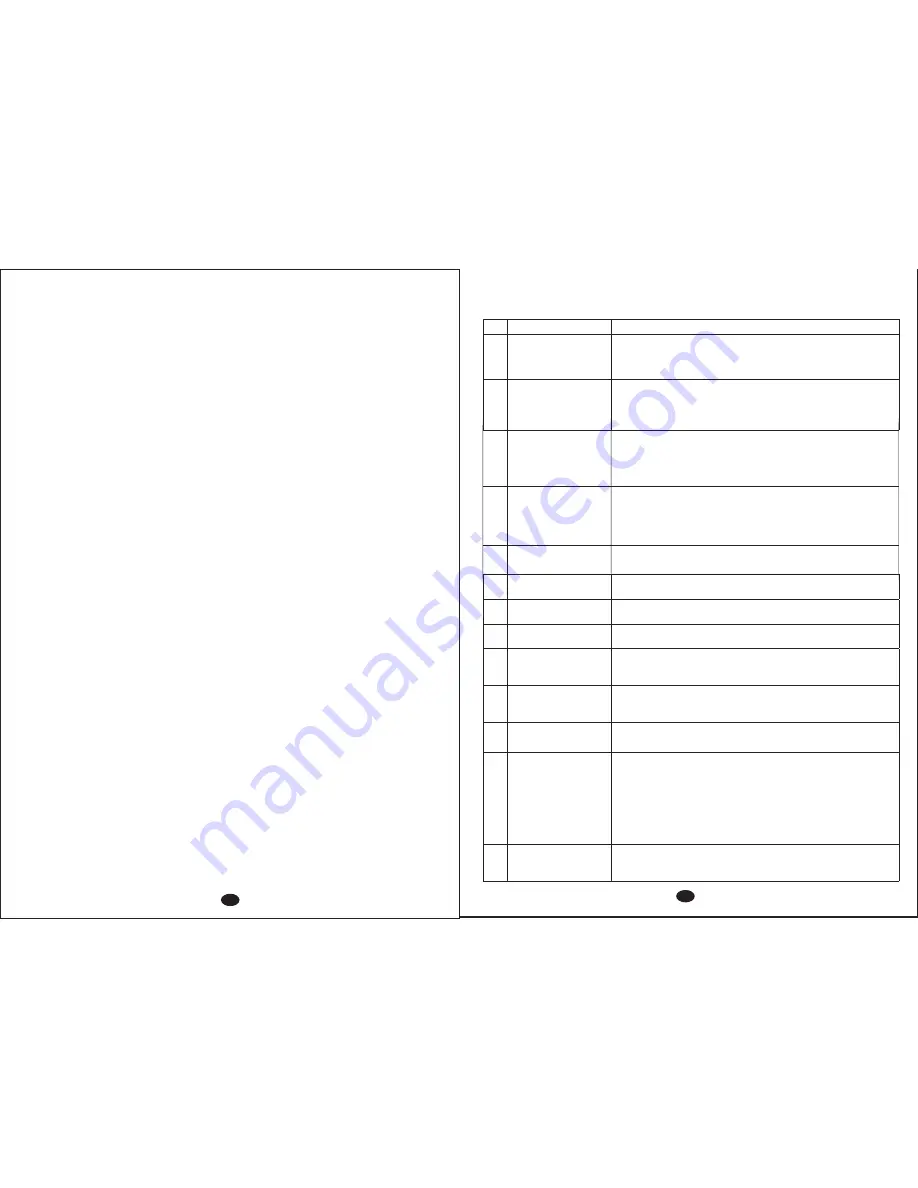
5
Input Key Function
S/N
Identification
Function
1
Throttle/Rudder Stick
2
Elevator/Aileron Stick
Forward and backward movement of the stick makes the helicopter
move forward and backward respectively. Left and right movement of
the stick makes the helicopter drift sideways left/right respectively.
(1) Throttle /Aileron stick
Forward and backward movement of the stick makes the helicopter
ascend and descend respectively. Left and right movement of the
stick makes the helicopter drift sideways left/right respectively
(2) Elevator/Rudder Stick
Forward and backward movement of the stick makes the helicopter
move forward and backward respectively. Left and right movement
of the stick will rotate the helicopter's fuselage left/right respectively.
3
Aileron Trim
Aileron trim subsidiary adjusts left and right drift.
4
Elevator Trim
Elevator trim subsidiary adjusts forward and backward movement.
5
Rudder Trim
Rudder trim subsidiary adjusts left and right rotation.
6
Throttle Trim
Throttle trim subsidiary adjusts ascent and descent.
7
Power SW
Pushing up switches on the power transmitter, pulling down
switches it off.
8
Neck Strap Eyelet
For the attachment of a neck strap which eases the tension of your
hands from holding the transmitter.
9
Antenna
Transmits wireless signal
10
CHG
(Optional)
11
DSC (Optional)
Connects to the data cable of computer simulator.
Forward and backward movement of the stick makes the helicopter
ascend and descend respectively. Left and right movement of the
stick will rotate the helicopter’s fuselage left/right respectively.
Can be used to charge the rechargeable battery pack (excluded)
inside the transmitter (at charge current 50mA, Voltage ≤ 12V.)
Notice: It is dangerous to charge a non-rechargeable battery
pack via this charge port.
It is dangerous to use the accompanied wall adapter as a DC
power supply.
16
4. Notice that the cyclic joystick is spring-loaded, you must maintain a forwards
pressure on the cyclic joystick otherwise it will return to its neutral position and your
helicopter will stop moving.
Tip-if you become confused, releasing your helicopter's controls will bring it to stop. it
will not lose height as the throttle is on a ratchet.
5. Stop you helicopter, turn it around (use rudder), and bring it back.
6. Choose a landing site. Fly your helicopter to a position that is precisely over your
chosen landing site and set your helicopter down in a smooth and precise landing.
7. Repeat this flying lesson until you become S-M-O-O-T-H-L-Y proficient and
precise.
3.5 Advanced Maneuvering
In this flying lesson you will combine cyclic joystick Pitch and Roll inputs with collective
Rudder and Throttle inputs to give more precise control to your helicopter maneuvers.
You've probably already tried combining Rudder and forward Pitch inputs. This
combination allows you to turn your helicopter, but it won’t look right. The helicopter
will remain upright. It's like watching a bicycle that's not leaning into the turn, because
air has very little grip, your helicopter will actually skid through its turn.
The solution is to make the helicopter lean-"Roll"-so that rotors help to counteract the
tendency to skid (or 'side slip').To do this, you must learn to synchronise your use of
mixed Pitch and Roll on the cyclic joystick, with mixed Rudder and Throttle on the
collective joystick
1. Begin a hover at shoulder height.
2. Push the cyclic stick Forwards to gather sufficient airspeed.
3. Begin your turn by pushing the cyclic joystick to the right (setting up the Roll) while
maintaining forward pressure.
4. As your model begins to respond to the Roll, push the collective Rudder joystick to
the right to initiate the turn.






























